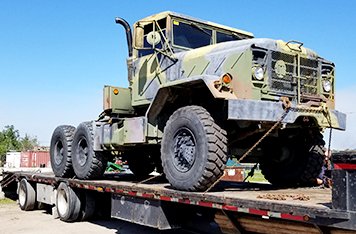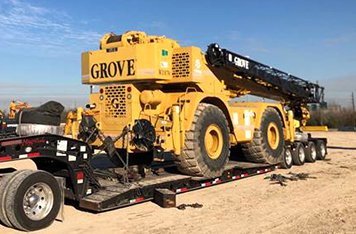Heavy haul trucking is a specialized form of transportation that requires a complex set of skills and resources in order to successfully move a shipment from one location to another. Shipping a haul from Connecticut to Alaska is a particularly challenging task due to the sheer distance involved and the unique environmental conditions encountered along the way. In this article, we'll explore the highways that a trucker might use to transport a haul from Connecticut to Alaska, the unique challenges that might be faced, the various weather conditions that might be encountered when shipping from Connecticut to Alaska, and any other special considerations.
Highways to Alaska
A driver transporting a haul from Connecticut to Alaska must traverse a vast distance, making the journey a long one even if the roads and traffic conditions are optimal. The most direct route is along Interstate 90, which runs from Boston, MA, through states including New York, Pennsylvania, Ohio, Indiana, Illinois, Wisconsin, Minnesota, South Dakota, Wyoming, and Idaho, before eventually reaching Seattle, WA. From there, the driver will need to take the Alaskan Highway, a 2,232-mile stretch of highway that runs through the Yukon and British Columbia before reaching its end in Delta Junction, AK. Depending on the size of the shipment, the driver may also need to take other highways and roads as well in order to get to its destination.
In addition to the sheer length of the journey, the driver will also need to consider other factors such as road conditions, traffic, and border crossings. Some of the roads, such as the Alaskan Highway, are often subject to closures and delays due to extreme weather conditions, so planning ahead is essential in order to ensure a successful delivery. Furthermore, border crossings can be time-consuming and have their own set of regulations and paperwork that must be dealt with, so it is important to familiarize oneself with the requirements in advance.
Unique Challenges
When shipping a haul from Connecticut to Alaska, there are a number of unique challenges that must be taken into account. For one, the sheer length of the journey can cause fatigue in the driver, and can also put additional strain on the truck itself. Furthermore, the roads along the way may be subject to extreme weather conditions, including heavy snowfall and icy conditions, which can slow down or even halt the journey altogether. Additionally, the remote nature of some of the highways can mean that help in the case of an emergency may be difficult to come by.
In addition to the unique challenges posed by the journey itself, the driver must also take into account the particular requirements of the shipment. Heavy haul trucking requires special equipment and training in order to move a shipment safely and efficiently, and the driver must be prepared for any potential issues that may arise. Furthermore, the shipment itself must be properly secured and prepared in order to ensure that it reaches its destination in one piece.
Weather Considerations
When shipping a haul from Connecticut to Alaska, the driver must be prepared for a variety of weather conditions that can occur along the route. The Alaskan Highway, for example, is subject to heavy snowfall during the winter months, and can be icy and hazardous. In addition, the region is subject to extreme temperatures, both hot and cold, which can cause road closures and other delays. Furthermore, fog can be a problem in the area, and can make it difficult to see clearly while driving.
In order to prepare for these conditions, it is essential that the driver is familiar with the route and is aware of the potential hazards. Furthermore, the driver should be prepared with the right equipment and supplies, such as chains and snow tires, to ensure that the journey can be completed safely. Finally, the driver should be prepared to take additional breaks in order to rest and recover from the rigors of the journey.
Special Considerations
Finally, when shipping a haul from Connecticut to Alaska, the driver must also keep in mind any special considerations that may be necessary. This includes ensuring that the shipment is properly insured and that all required paperwork is in order. Additionally, the driver must be prepared to deal with any customs or border crossing procedures, as well as any fees or taxes that may be due. Furthermore, the driver must be aware of any local laws and regulations that may be in effect in the areas that the haul will be passing through.
Heavy haul trucking from Connecticut to Alaska can be a daunting task, but with the right preparation and knowledge, it can be a relatively straightforward journey. By understanding the highways that will be used, the unique challenges that may be encountered along the way, the various weather conditions that may be encountered, and any other special considerations that may be necessary, the driver can ensure a successful delivery of the shipment.














































